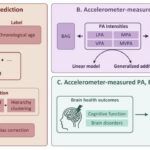
In the relentless global fight against COVID-19, understanding immunity against evolving variants remains a cornerstone of pandemic management. A recent landmark study published in npj Viruses delves into the nuanced cross-protective immune responses elicited by different SARS-CoV-2 variants, uncovering how antigenic variation impacts protection in small animal models. This research offers critical insights into how previous exposure to one variant could influence the immune defense against others, informing both vaccine design and public health strategies worldwide.
The SARS-CoV-2 virus, responsible for the COVID-19 pandemic, has exhibited remarkable genetic diversification, spawning numerous variants with distinct antigenic profiles. These antigenic differences, especially in the spike protein—the primary target of neutralizing antibodies—pose significant challenges for immunity. The study led by Selvaraj, Stauft, Liu, and colleagues systematically evaluates how these antigenic distinctions modulate cross-protection, leveraging small animal models to produce controlled, reproducible immunological data.
Using rodent models, primarily transgenic mice and hamsters engineered to recapitulate human COVID-19 infection pathways, the research team infected animals with one SARS-CoV-2 variant and subsequently challenged them with a heterologous variant. This approach allowed them to dissect the protective efficacy derived from exposure to one variant when confronted with a different strain. Such models stand as pivotal tools, bridging in vitro immunological assessments with the complex in vivo reality of viral pathogenesis and host response.
.adsslot_fJW3xYRDhB{ width:728px !important; height:90px !important; }
@media (max-width:1199px) { .adsslot_fJW3xYRDhB{ width:468px !important; height:60px !important; } }
@media (max-width:767px) { .adsslot_fJW3xYRDhB{ width:320px !important; height:50px !important; } }
ADVERTISEMENT
The study’s findings elucidate that cross-protection is asymmetrical and heavily dependent on the degree of antigenic similarity between the primary infecting variant and the secondary challenge strain. Animals initially infected with a variant possessing closer spike protein homology to the challenge variant demonstrated substantial protection, evidenced by reduced viral titers, mitigated pathology, and diminished clinical signs. Conversely, infections involving antigenically distinct variants yielded weaker or incomplete immunity, underscoring the intricacies of immune escape.
At the molecular level, the investigation highlights the role of neutralizing antibodies targeting conserved epitopes across variants as critical mediators of cross-protection. However, the decay or low titers of such broadly reactive antibodies in some scenarios indicate that immune memory may not be uniformly robust against all antigenic shifts. Furthermore, the involvement of T-cell mediated immunity emerges as a vital component, potentially compensating for diminished humoral responses where antigenic divergence is pronounced.
One surprising dimension of the work involves the identification of certain “immunodominant” regions of the spike protein that vary more substantially across variants, effectively sculpting the immune landscape. Variants harboring mutations in these domains often evade neutralization, thereby diminishing the protective effect of prior exposure. This observation dovetails with current concerns about omicron sublineages and other emergent variants that exhibit marked antigenic differences.
Moreover, the research underscores that prior infection alone may not guarantee sterilizing immunity against subsequent variant challenges. Instead, protection manifests variably, often reducing disease severity rather than preventing infection outright. Such partial immunity suggests that vaccine strategies should aim not just at preventing infection, but also at limiting disease progression, an approach critical for managing healthcare burdens in future outbreaks.
Importantly, the authors discuss the implications of antigenic drift for vaccine booster design. Their data advocate for updated immunogens incorporating multiple variant spike sequences or conserved epitopes to broaden protection. The observed heterogeneity in cross-protection signals that monovalent vaccine formulations, especially those based on ancestral strains, may increasingly falter as the virus continues to evolve.
The interplay of humoral and cellular immunity painted by this study also calls attention to the necessity of integrated immune profiling in vaccine efficacy trials. Measuring neutralizing antibodies alone might underestimate the scope of immunity, as T-cells recognizing conserved viral peptides can mediate profound antiviral effects. This holistic view paves the way for next-generation vaccines engineered for durability and breadth.
From a public health perspective, the findings contribute substantially to predictive models of epidemic dynamics. Regions with prior circulation of antigenically similar variants might experience attenuated waves upon exposure to related new strains, whereas zones dominated by divergent variants could be susceptible to more severe outbreaks. Such nuanced understanding enables tailored interventions and vaccine deployment strategies.
This comprehensive examination in small animal models reinforces the concept of “immunological imprinting,” where the history of variant exposure shapes subsequent immune responses. The phenomenon implies that the sequence and timing of variant circulation in populations can influence susceptibility patterns, a factor crucial when planning long-term vaccination schedules or anticipating variant trajectories.
Technically, the study employs a robust combination of viral load quantification, histopathological assessment, and immunoprofiling assays such as neutralization tests and ELISPOT for T-cell activity. The integration of these methodologies provides a multidimensional picture of cross-protection mechanisms, establishing a gold standard for future SARS-CoV-2 immunological research.
In essence, Selvaraj and colleagues have illuminated the complex immunological choreography at play between SARS-CoV-2 variants and host defense systems. Their findings deliver a clarion call for adaptive, dynamic vaccine strategies that accommodate viral antigenic variability, a key to maintaining control over COVID-19 as it evolves.
As the virus continues its global circulation, insights from such pioneering research become indispensable. They not only enhance our understanding of variant interplay but also galvanize efforts to engineer vaccines and therapeutics that anticipate the virus’s next moves, safeguarding populations against the multifaceted challenge of SARS-CoV-2 diversity.
The implications extend beyond COVID-19, providing a paradigm for managing viruses with high mutation rates and antigenic diversity. By decoding cross-protection patterns, scientists can better predict immune escape, optimize vaccine designs, and ultimately, mitigate the impact of future pandemics.
This study’s detailed exploration of cross-protection in small animal models thus represents a watershed moment in viral immunology, equipping researchers and clinicians with vital data to navigate the shifting landscape of SARS-CoV-2 infection and immunity.
Subject of Research: This study investigates the differential patterns of immune cross-protection elicited by antigenically distinct SARS-CoV-2 variants using small animal models to understand how exposure to one variant influences immunity against others.
Article Title: Differential patterns of cross-protection against antigenically distinct variants in small animal models of SARS-CoV-2 infection.
Article References:
Selvaraj, P., Stauft, C.B., Liu, S. et al. Differential patterns of cross-protection against antigenically distinct variants in small animal models of SARS-CoV-2 infection.
npj Viruses 3, 49 (2025). https://doi.org/10.1038/s44298-025-00125-w
Image Credits: AI Generated
Tags: animal models in vaccine researchantigenic variation in SARS-CoV-2COVID-19 immune response variabilitygenetic diversification of SARS-CoV-2 variantsheterologous variant challengesimpact of previous exposure on immunitypublic health implications of variant immunitySARS-CoV-2 cross-protectionsmall animal models for COVID-19spike protein neutralizing antibodiestransgenic mice in immunology studiesvaccine design strategies for COVID-19



